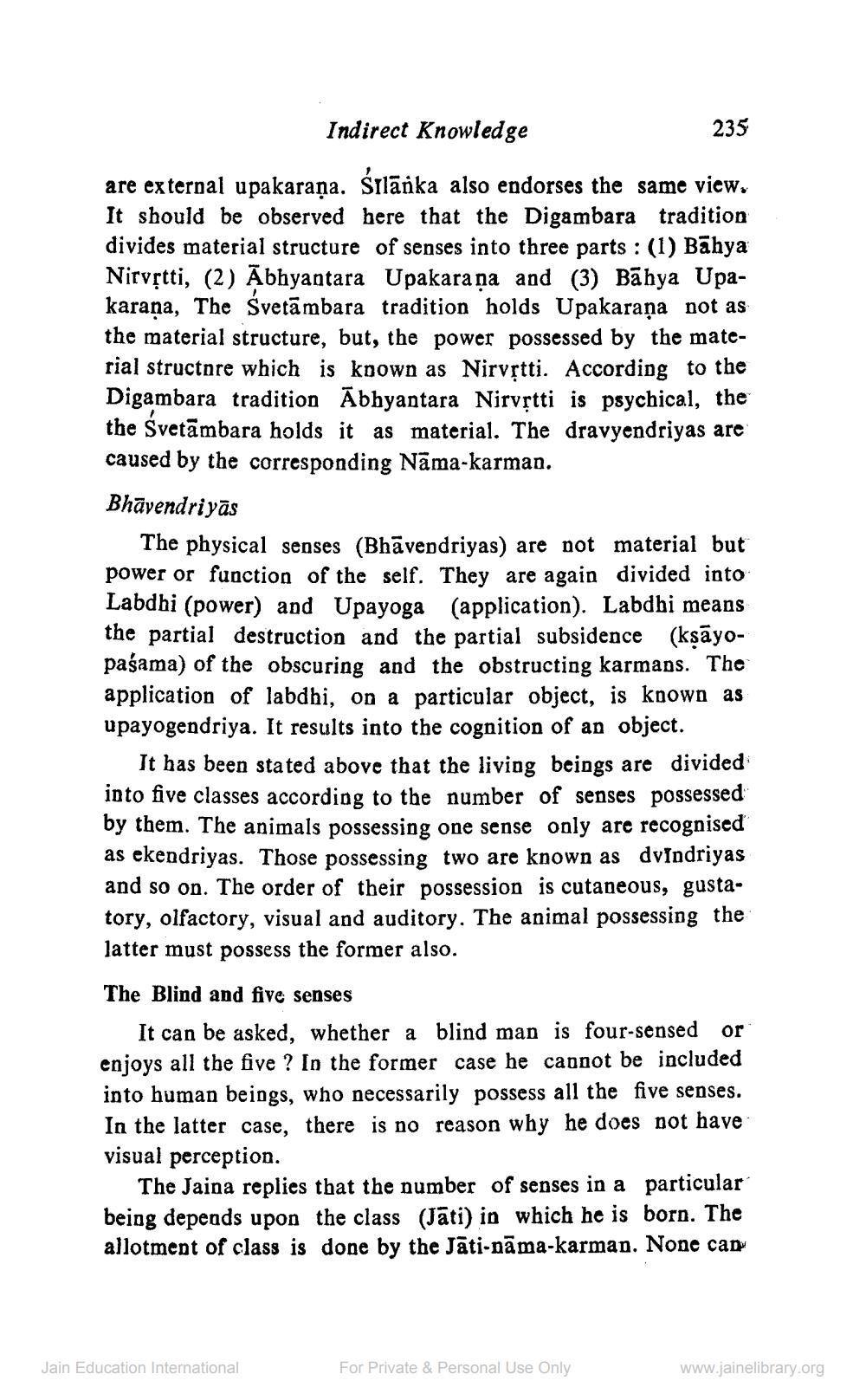________________
Indirect Knowledge
235
are external upakaraña. Silānika also endorses the same view. It should be observed here that the Digambara tradition divides material structure of senses into three parts : (1) Bāhya Nirvștti, (2) Ābhyantara Upakaraṇa and (3) Bāhya Upakaraṇa, The Svetāmbara tradition holds Upakaraņa not as the material structure, but, the power possessed by the material structore which is known as Nirvștti. According to the Digambara tradition Ābhyantara Nirvștti is psychical, the the Svetāmbara holds it as material. The dravyendriyas are caused by the corresponding Nāma-karman. Bhāyendriyās
The physical senses (Bhāvendriyas) are not material but power or function of the self. They are again divided into Labdhi (power) and Upayoga (application). Labdhi means the partial destruction and the partial subsidence (ksāyopašama) of the obscuring and the obstructing karmans. The application of labdhi, on a particular object, is known as upayogendriya. It results into the cognition of an object.
It has been stated above that the living beings are divided into five classes according to the number of senses possessed by them. The animals possessing one sense only are recognised as ekendriyas. Those possessing two are known as dvindriyas and so on. The order of their possession is cutaneous, gustatory, olfactory, visual and auditory. The animal possessing the latter must possess the former also.
The Blind and five senses
It can be asked, whether a blind man is four-sensed or enjoys all the five ? In the former case he cannot be included into human beings, who necessarily possess all the five senses. In the latter case, there is no reason why he does not have visual perception.
The Jaina replies that the number of senses in a particular being depends upon the class (Jāti) in which he is born. The allotment of class is done by the Jāti-nāma-karman. None cap
Jain Education International
For Private & Personal Use Only
www.jainelibrary.org




